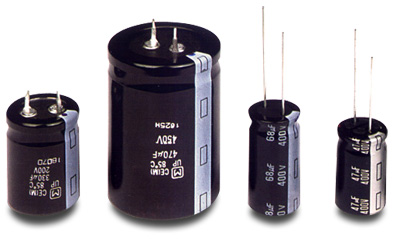January 1, 2010If It Ain't Broke . . .
Last October I wrote "An Open Letter to a Tweakaholic," a tongue-in-cheek
"intervention" that some read as a slagging-off of tweaks in general. It
wasn’t, and to prove it, in future columns I’ll highlight some tweaks that I know
work. These won’t be the kind that require a soldering iron -- when it comes to
messing with someone else’s well-conceived and -executed design, that’s where I
draw the line.
What such companies as Boulder, Blue Circle, Paradigm,
Revel, Simaudio, and Definitive Technology have in common is that every one of them uses a
scientific process to develop some of the best products in audio. If there’s one
thing I’ve learned from meeting with the personalities behind these companies,
it’s that great audio products are the results not of accident but of solid
engineering, meticulous prototyping, careful measurements, and trial and error. By making
components that offer uncompromised performance right out of the box, such companies
remain at the top of the audio game because they’ve earned the trust of a buying
public that probably never gives a second thought to how their products were designed.
The major problem I have with uncontrolled tweaking is that
it’s premised on the assumption that most audio gear leaves the factory inherently
flawed. This assumption usually includes another, about some kind of conspiracy --
everything from bean counters not allowing engineers to use their first choice of parts (i.e.,
expensive ones), or that the performance of midline components is deliberately degraded to
ensure that the most expensive products sound the best.
I’ve never talked to an audio engineer without asking
what he or she thinks of component parts and accessories marketed as "audio
grade." To a person, each has answered that most of these make no difference at all,
and that the high cost of the ones that do make a difference make them poor investments
for whatever gain they might offer. In this category of "poor-value component,"
by far the one most often cited is the now-defunct Black Gate electrolytic capacitor.
All the rage until a few years ago, when the manufacturer
ceased production, Black Gate capacitors made use of carbon-ceramic nanotechnology that
was supposed to make them vastly superior to standard caps. The Japanese-made Black Gates
were certainly much more expensive than their industrial cousins. While a
very-good-quality Panasonic power-supply capacitor might cost $10, the equivalent Black
Gate cost more than $200.
Aside from their high cost, a few other fundamental
problems led to the demise of the Black Gates: the break-in period claimed for them was
incredibly long, and their availability was limited and inconsistent. Nonetheless, based
on the promise of performance far superior to that of a mere "industrial-grade"
part, some tweakaholics shelled out hundreds of dollars to have every capacitor in each of
their components replaced with Black Gates. I was one of them.
In hindsight, I should have suspected the Black Gates’
reputed glacial break-in cycle. Wiser now, I read "long break-in" as code for
"it sounds like crap but you’ll get used to it." And the Black Gates
certainly sounded abysmal in comparison to the caps they replaced. Nonetheless, they were
expensive; clearly, I had to be patient and wait for things to improve -- that might take
six months, but in the end, the sound must surely be better, and worth it.

Various values of Panasonic electrolytic capacitors.
|
I never found out if the Black Gates were worth it -- I
could take listening to mangled sound for only so long. After a couple of months of 24/7
burn-in with no sign of improvement, I removed the Black Gates and replaced them with
Panasonic caps. What a waste of my time and money.
One thing I’d failed to appreciate when embarking on
my spree of modification was that, before I’d even heard of Black Gates, I was already
getting huge performance from my system. One of the central human weaknesses must be the
constant need we feel for reassurance that we’re doing the right thing -- or, in this
case, that we have excellent audio gear. Who among us hasn’t purchased something
electronic and, post facto, searched for positive reviews to justify our choice? And
doesn’t it hurt a little when some ill-mannered reviewer says that your Gabulator
Digital Extreme is merely "OK"? Of course it does. Then someone else comes along
and says, "Hey, everything’s gonna be alright; just take one of these black
beauties and it’ll all go away." Next thing you know, you’ve got a
component full of expensive capacitors and resistors and wires and voltage regulators and
other things that the component’s designer never intended to be used in it.
That just about covers what I think about modifying designs
that are probably excellent to begin with. Neither you nor I, nor that guy who’s
always posting on Audio Asylum, knows more about what it takes to achieve peak performance
from my Simaudio Moon i5.3 than the man who designed it. And if you think about your
audio system, I’ll bet its constituent parts all emerged from engineering departments
that are at least competent, and probably very good or even excellent, at what they do. In
fact, I’ll wager that there are only two parts of your system that haven’t been
designed to help create great sound: the electricity that powers them and the room
you’ve put them in. But we can change that.
Next month, and from time to time thereafter, I’ll be
writing about various tuning products that deserve careful attention but not a full-blown
review. Next month, I’ll tell you about Cathedral Sound’s (relatively) tiny
Acoustic Panels, and whether or not they’ve been able to tame my too-"live"
living room.
. . . Colin Smith
editor@goodsound.com
|















